“NOTE: This trip was taken before the outbreak of COVID 19. Please travel by armchair until it is safe to do it in the real world again.“
The Caribbean island of Aruba is blessed.
A calm and restful west side is balanced by a rocky and wild east side. Approximately 20% of the island’s land mass has been set aside for Arikok National Park, a true gem located towards the south eastern end.
During our week’s stay in Aruba, we were lucky enough to visit the park twice. The first time was with a local guide – our AirBnB host – on a sunrise hike along a trail lined by cacti, past a sand dune area, and along the beach.
This mermaid wanted to check out a famous place for swimming, so we made the trip to the ‘natural pool’ (also known as Conchi Pool) – a small, 20 foot long pool partially protected from the heavy surf by a naturally formed ring of rocks.
As the darkness lifted, our hike along the shore revealed stunning, varied, land and seascapes. There are beautiful things wherever you look – beautiful beaches, rocky outcroppings, crashing waves, ubiquitous cacti and stark landscape – even underfoot!
Everywhere you step, there are pieces of fossilized coral that once lay underwater, until pushed up long ago by volcanic activity, to rest high and dry on the ground all around you, well away from the high tide mark. It feels like you are literally walking on history.
We didn’t see much wildlife, but we did share the park with some creatures – a few distant goats high on rocky viewpoints, surveying their domain. Before our early morning arrival, two crabs had set out on a road trip across the sand. Wonder what they talked about?
After about an hour or so of casual walking, the stairway leading down to the shore came into view. As hoped because we got there early, we avoided the crowds and had the place entirely to ourselves. It was sunny and warm, but due to the wind, the water was a little rough on the other side of the rocks.
We left our clothes with our guide on the shore and carefully clambered into the water, watching our footing and hanging onto rocks for balance. It is probably possible to snorkel in the pool, but we didn’t have any gear with us.
Once over what felt like a rocky gateway, the pool looked so inviting. This early in the morning, the sun cast long shadows, giving the pool and its surroundings a bit of a moonscapey feel.
Just looking down, I could see a few wee fishies, but there weren’t lots of them. Whatever you do in there, beware of rogue waves. They come shooting at you, up and over the top of the (very sharp) rocks with little warning and a lot of force.
There is a staircase with a railing from the road leading down towards the water. There is a small gazebo like shelter and one picnic table on site, but nowhere to change, no water and no bathroom available, which adds to the wild feeling of the place, but also demands a little planning ahead.
We loved our outing to the natural pool, and wanted to see more of the park, so a few days later, we rented a car and decided to spend a day exploring the rest of the park. The roads are rough in places through the park, so we drove slowly and carefully to avoid damage to our vehicle.
We parked and wandered a trail along the shoreline. So many gorgeous views in every direction, with beach after beach after beach.
For those who like to get to the top of each country they visit, one hike in the park to try is Jamanota Hill, Aruba’s highest point at 188m (620 ft). Wild goats and donkeys roam the area, and with Venezuela only about 30 km (18 mi) away, it is sometimes possible to see the coastline of South America in the distance.
Some of the beaches are close to the parking area, others take a bit of walking. Swimming isn’t recommended, as the surf there is quite strong. On our trip in February, there were few people sharing the beaches with us, which enhanced the feeling of wildness.
The Caves
My favourite experience of our trip to Aruba was, to my surprise, exploring the caves of Arikok. The first cave was Fontein cave, which is open only when attended by a Park Ranger. Ours knowledgably and enthusiastically shared the history and features of the cave.
It includes interesting limestone formations, reddish cave paintings from indigenous peoples and antique graffiti with incredible penmanship thought to be left there by the Spanish in the 1800’s.
Quadirikiri is the second cave, open to self guided tours. It provided us with a most memorable experience – we saw the cave’s resident ghost! We’re not talking about a real ghost…. But this was as close as you can get. In reality, bats live in the deep, low-roofed recesses that branch off the main chambers, but we didn’t see any of them and thankfully didn’t even really smell them either… but that could be because I was enthralled by our “ghost.”
It is a two-chamber cave, and each chamber had a small hole in the roof to let beams of light in, and help circulate air. The island has so little rainfall, that holes in the roof were not a problem. With good vision, the light from the holes mostly enables you to see where you are going in there, but using the light from your cell phone or a headlamp is recommended just to be safe. Cam is six foot four inches (193 cm) tall, and in the two main chambers he could stand with no problem. The roof of the passageway between the two chambers was lower and required him to crouch a little while walking, but he did fine.
After admiring the first chamber, we made our way deeper into the cave. We stood for a while, and I played around with my camera, trying to figure out how best to capture the tricky lighting conditions. We were astounded to see a long, skinny, ghostly form swirling and growing before our eyes, and then disappearing about ten seconds later. We looked at each other, wide-eyed and grinning: “Whoa!!! Did you SEE that???” We waited ten minutes or so, anticipating its return, had our camera ready, both for photos and hopefully a video. Sadly, we had to hang out for an extra ten minutes, waiting for a few very selfie involved and oblivious tourists to leave before we could have the space to ourselves and a clear shot of our “ghost.” Those that came and went quickly missed out, but our patience was rewarded!
Video – Our very own cave ghost
Our theory was that the “ghost” was created by the sun streaming through the hole in the roof at a particular angle, heating up the air, which caused some sort of vortex that was carrying dust particles lit up by the sunbeam. Then again, it might actually have been a ghost! What do you think? Any scientists out there with a better theory as to our ghost?
We emerged to bright sunlight and a vigorous breeze off the water. Outside the cave was a wee stone tower with a sweet view of the ocean that was begging for a photo. We were excited to keep exploring elsewhere on the island and see what other secrets Aruba had for us.
Gallery
If You Go:
Arikok National Park
The daily park entrance fee per person during our visit in pre-Covid times was $11USD, payable at the visitors centre at the main entrance to the park. Bathrooms and maps of the park are available here too. Bottled water was available for purchase at the visitor centre, in case you forget to bring some. It is hot, dry, and windy on this side of the island, and easy to get dehydrated without realizing it. Don’t underestimate how arid hiking in this area is especially when it is windy. We brought water bottles, and wished we’d brought double the amount. In the end, we cut our hike slightly short so we wouldn’t run out of water.
We stopped at the park’s restaurant and were underwhelmed by decent, but average food at 5-star prices. That said, it is worth a stop here, as they have a bathroom available. If you are travelling on a budget, we recommend you bring your own lunch. As always, pack out what you bring in, don’t feed any animals you come across, and do not litter.
The Natural Pool
Guided tours are widely available to Arikok’s natural pool. I have heard from other travelers that the 4 X 4 ride to the pool can get rather bumpy and the drivers tend to go for it. Beware if you have a bad back that is aggravated by jostling. It is possible to rent a vehicle and drive to the pool as well; drive slowly and carefully. Do not attempt this unless you have a 4×4.
It is possible to leave your car and hike in from the park’s main gate, but I was told it takes 45 minutes or longer. The route we took was from a nearby horse farm, with a local guide from our Air B and B accommodation.
This is a wild and beautiful spot. Be very careful here. Our visit was on a day when the sea was rather rough. This meant occasional waves crashing over the rocks with little notice as we could not see them coming. Do not go beyond the rocky edges of the pool. A rogue wave could catch one unawares. People have died here in the past; use common sense and don’t be one of them.
The pool is deep enough that there are not many places to stand up, so be ready to actually swim. Access from the shore is uneven, rocky and slippery. Best to use water shoes if you have them for the actual swim.
The Caves
Entering the Quadirikiri cave there are a few steep steps but there is a handrail, so take it slow if you have mobility difficulties. Once in the caves, the footing is fairly good; but be careful inside.


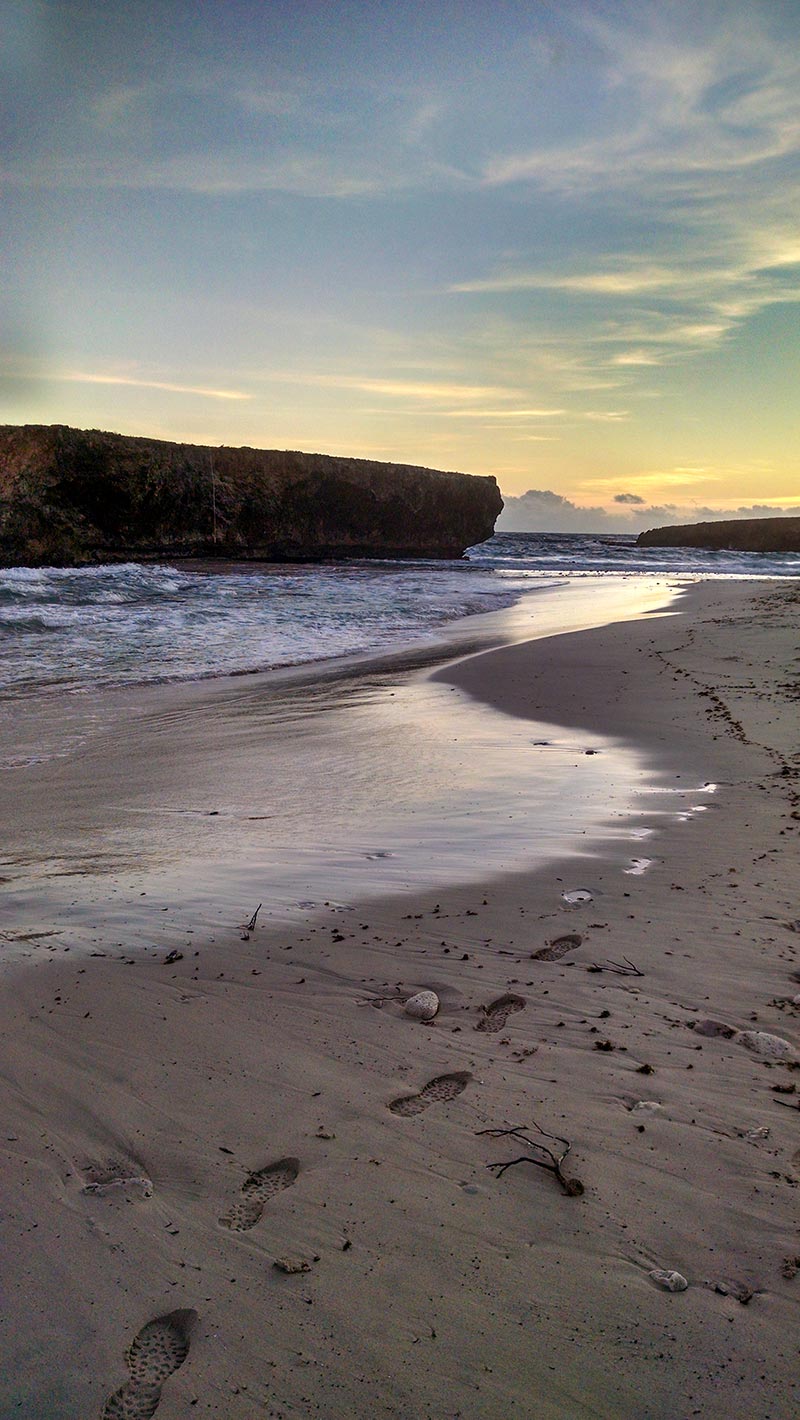
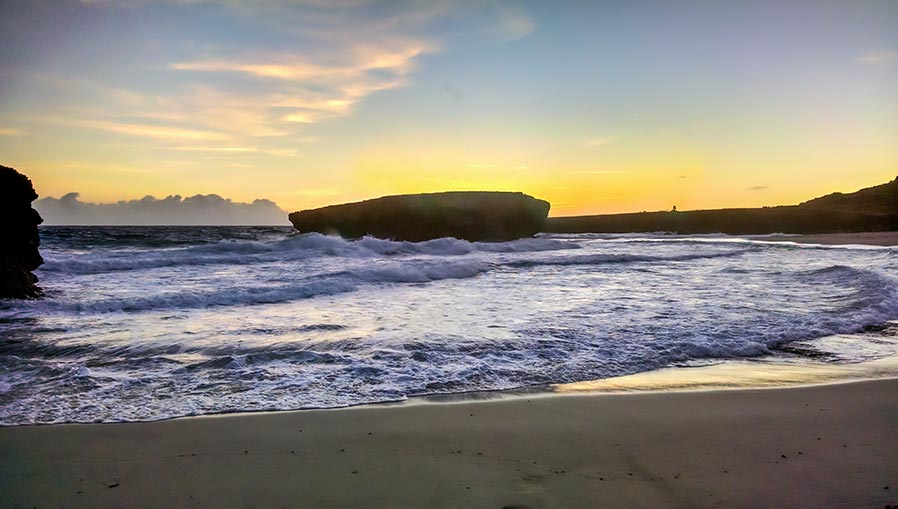
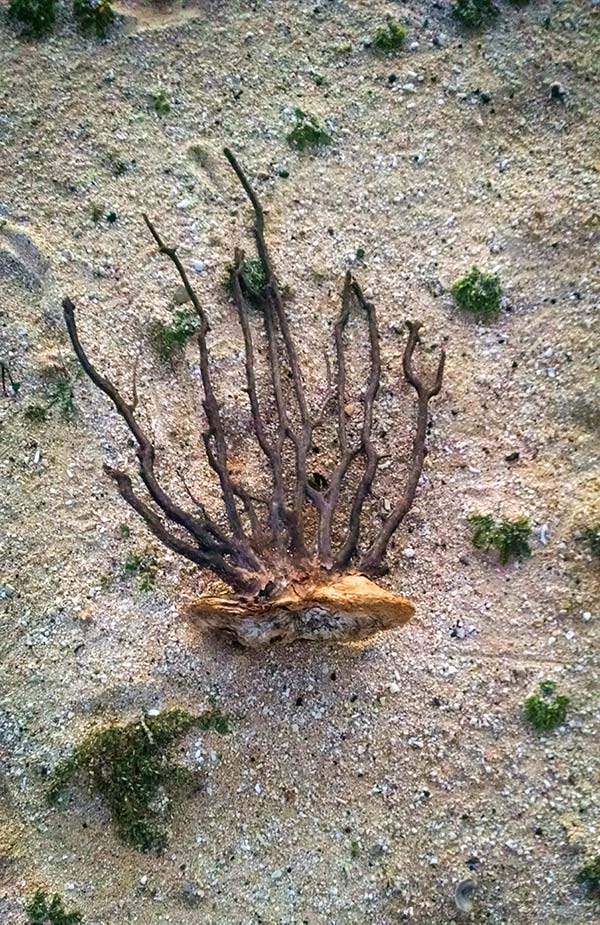

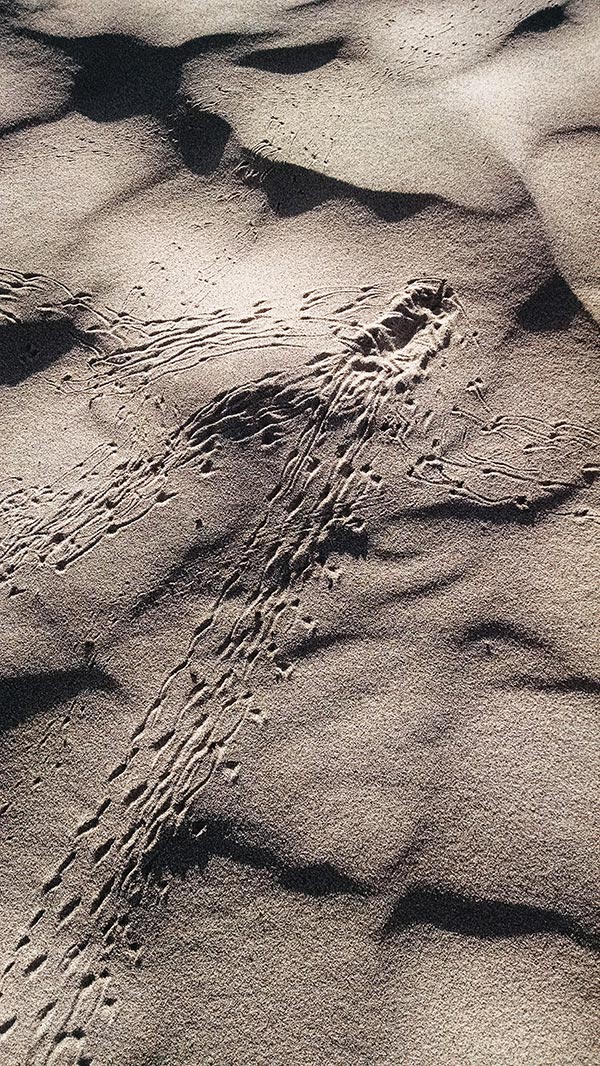
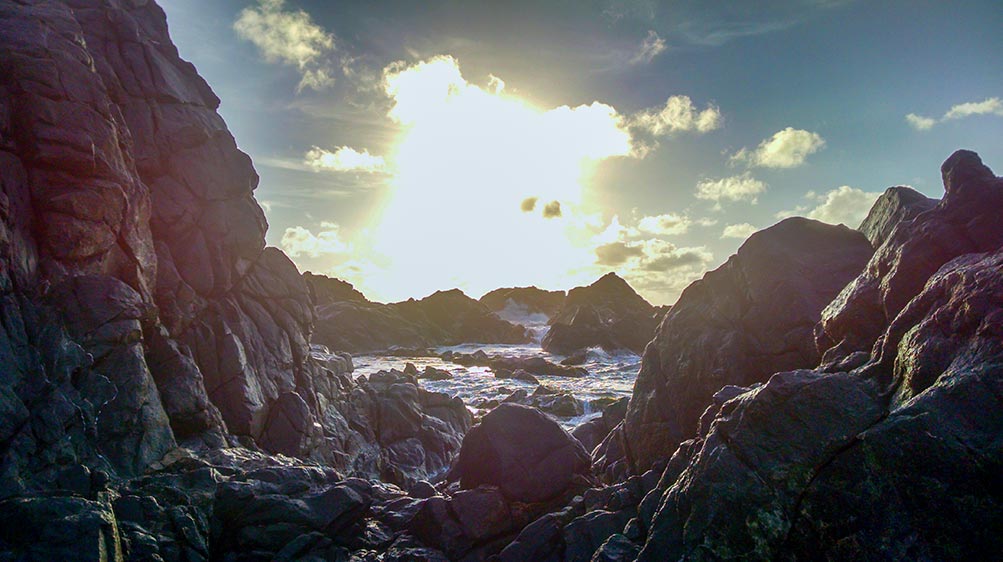
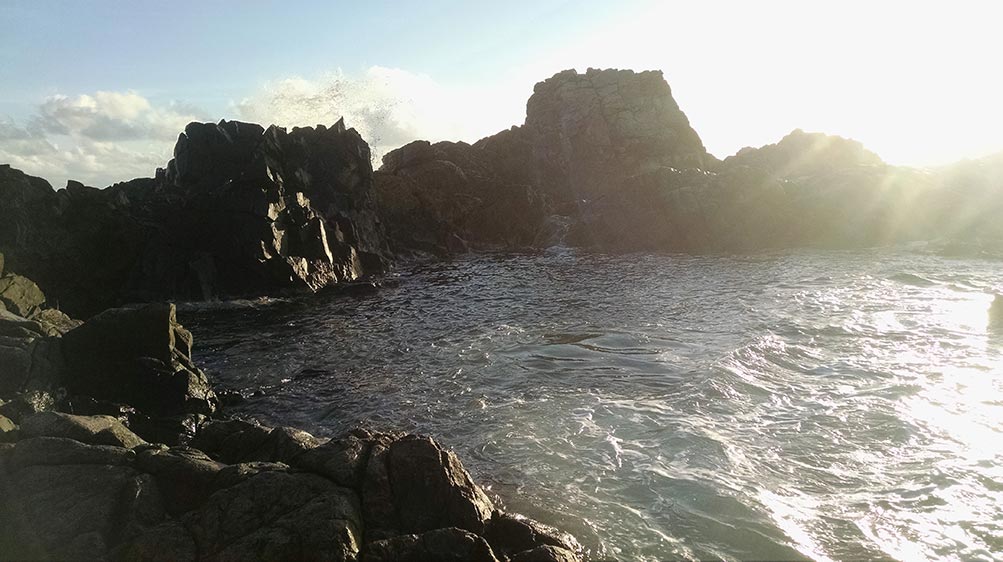
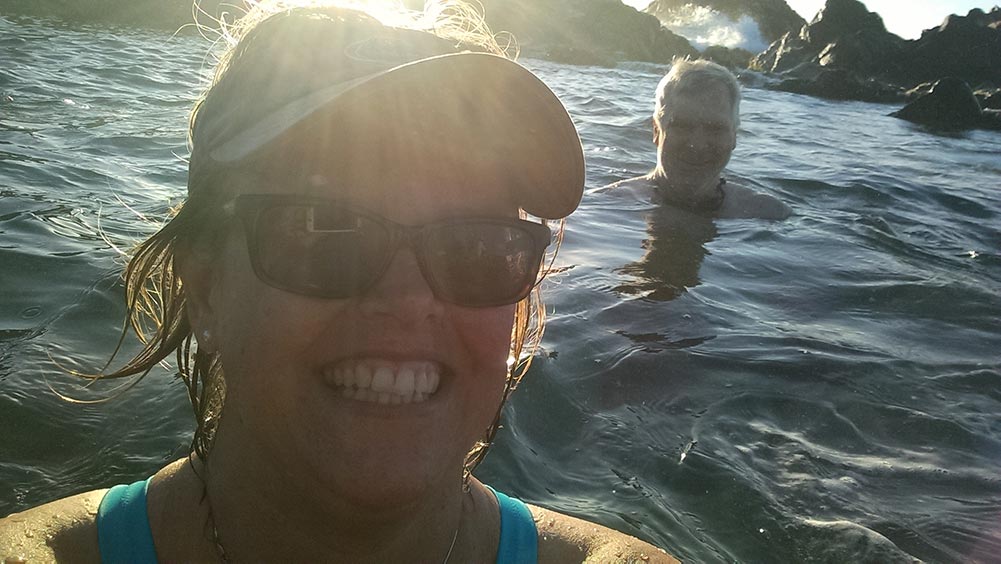
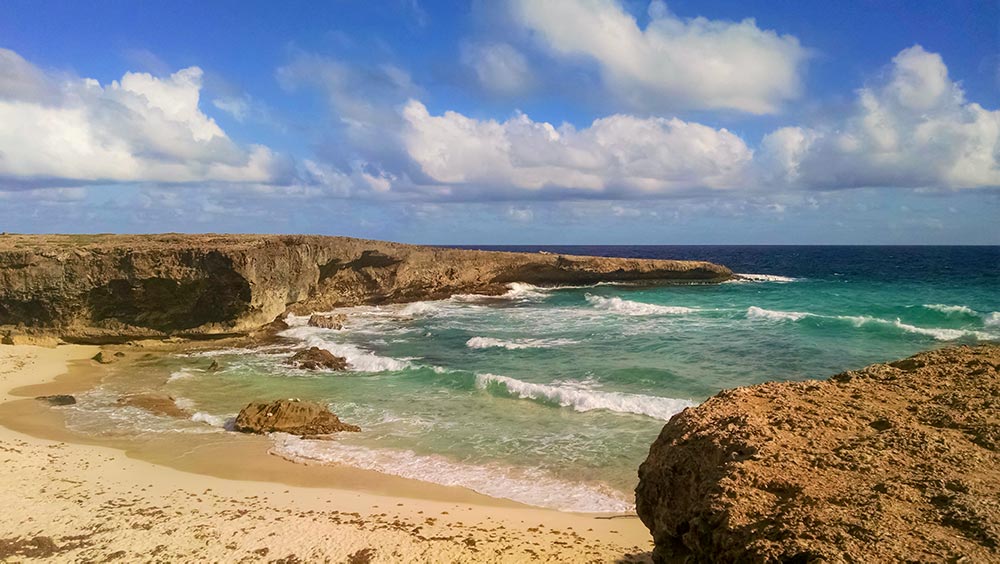
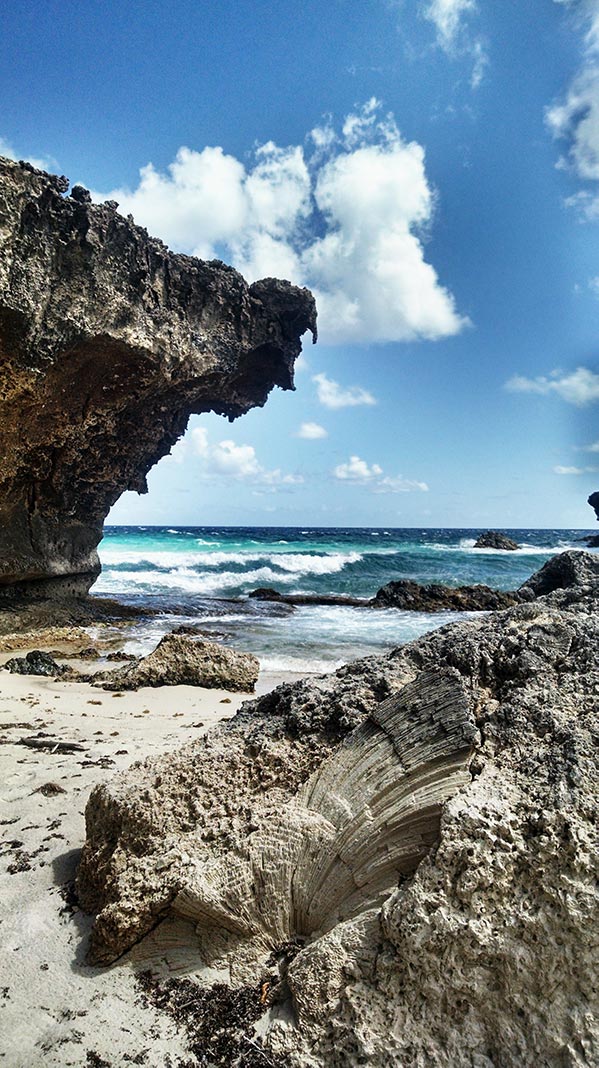
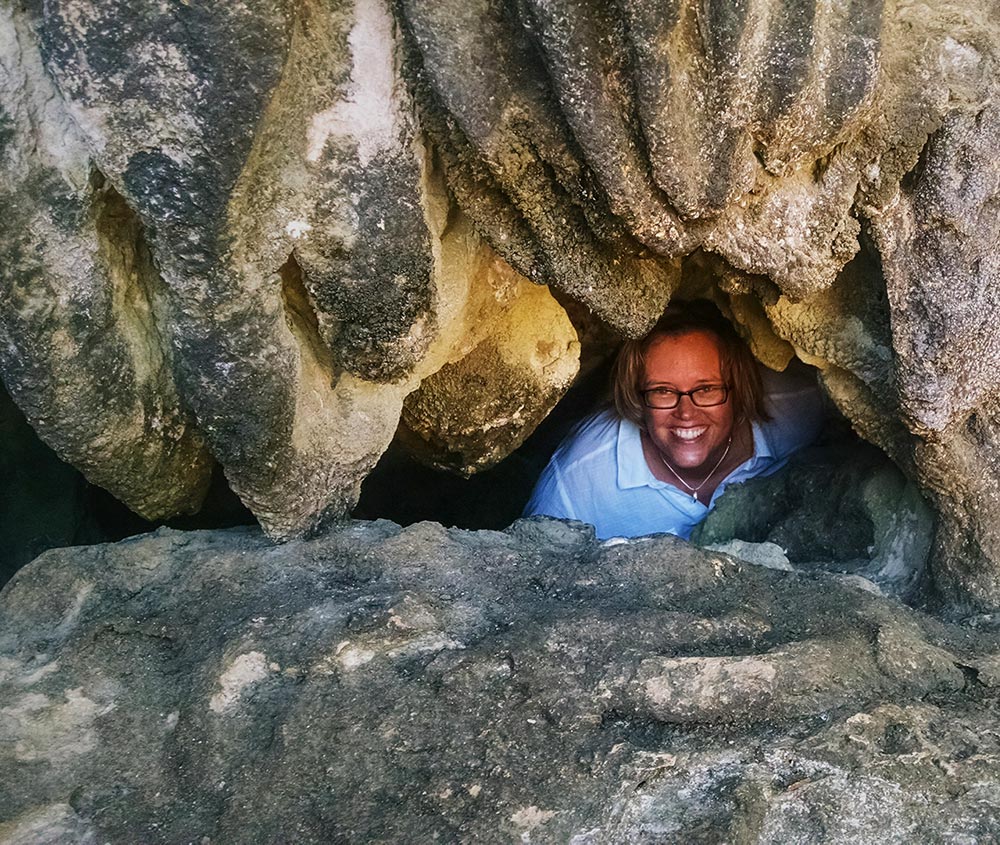
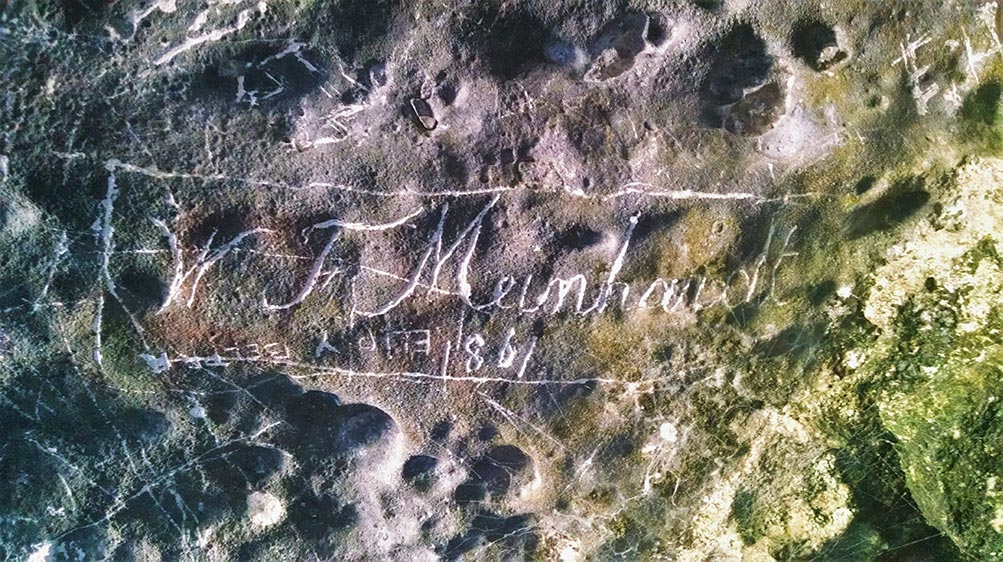
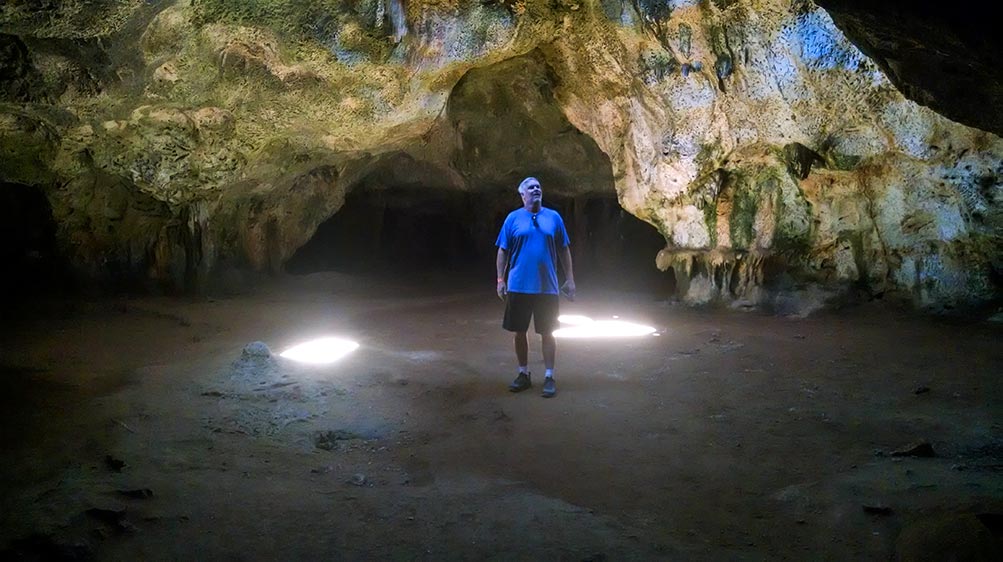
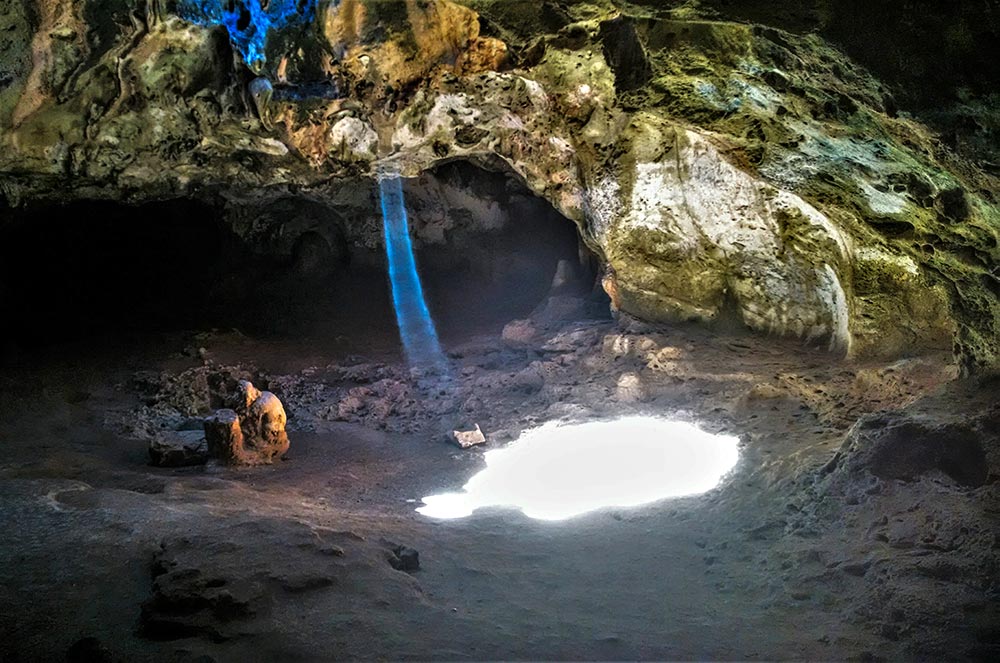

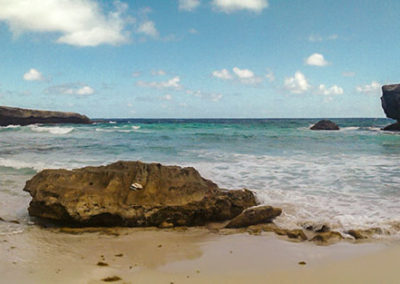
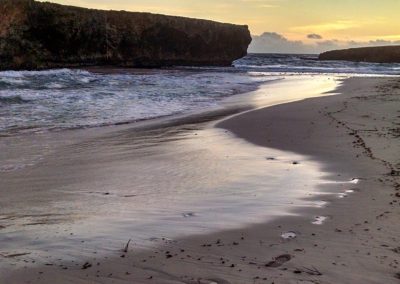
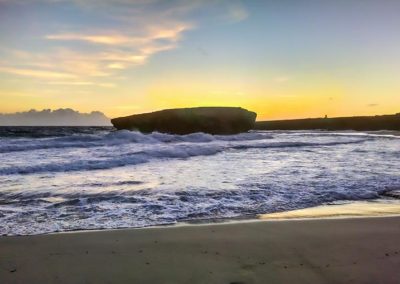
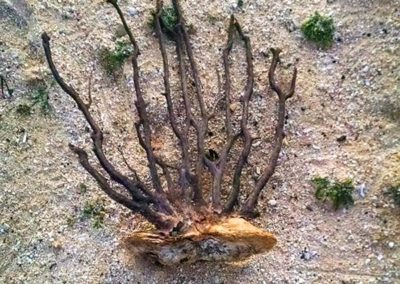
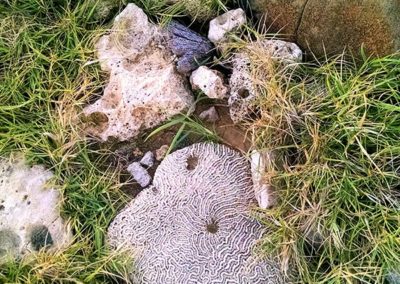

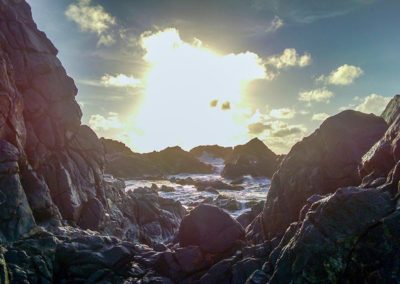
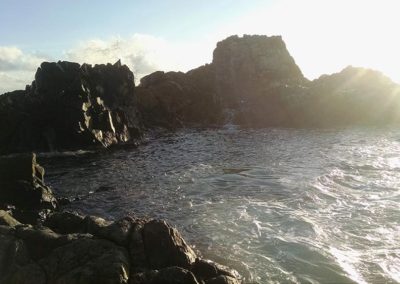
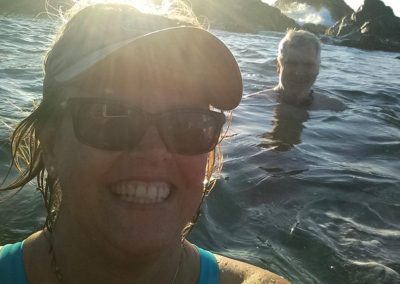
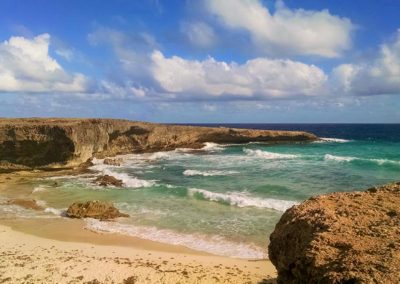
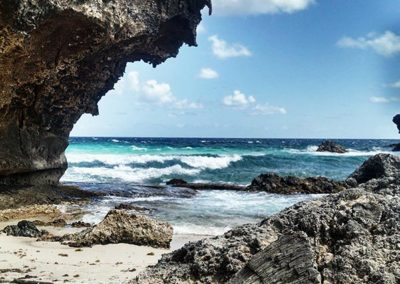
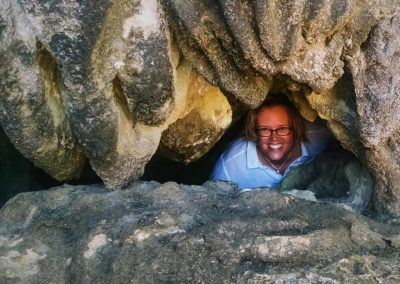
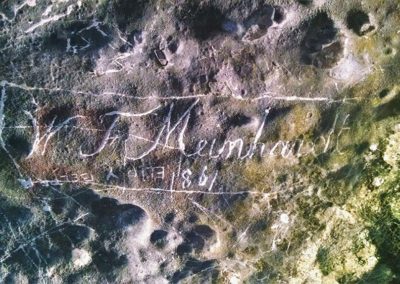
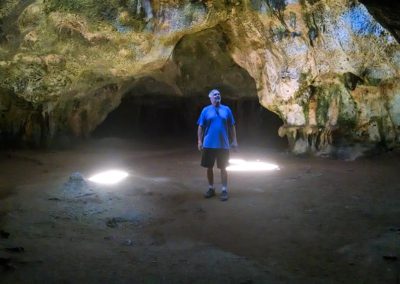
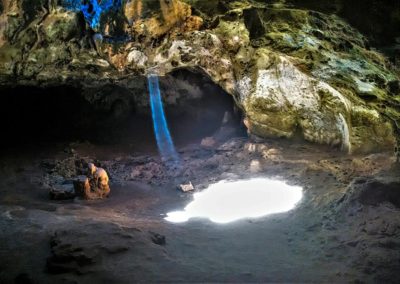
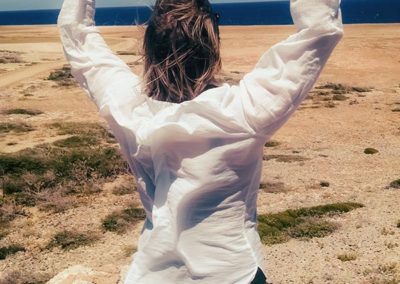
0 Comments